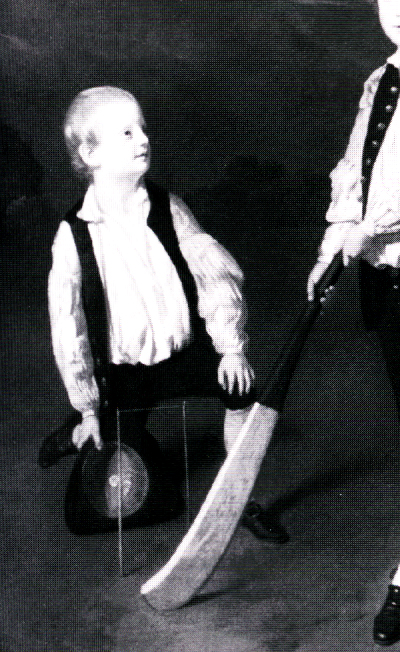The Children of Sir Francis Ford by William
Beechey, 1793
Tim went to school, but only briefly. He went to a Dames' school lead by
an elderly woman in his village named Mrs. Fussbum. Tim is only eight
years old and his
schooling is over. He has been apprenticed to a chimney
sweep named Nicolas Nastyfingers. Tim will work for Mr. Nastyfingers
until he is 21 years old. As an
apprentice,
Lil' Tim learns this trade that will be his future livelihood. He is not
paid much, but he is learning skills with which he will support
himself as an adult.
Many eighteenth educational theorists believed that poor children did not
need quality education. Among these were Isaac Watts and Jean Jacques
Rousseau. In fact "Rousseau stated boldly that the poor did not need
education at all."
7 Watts believed that country children did not need to learn how
to read or write. These educationalists thought that providing schooling
for
poor
children was an idle pursuit that would make them unfit for the hard
labor that they would undertake as adults. Consequently, many poor boys
either
did not receive any education or attended Dames' schools nearby.
Elderly women in a village or town usually ran Dames' schools.
They were attended by poor children and children of tradesmen.
In the eighteenth century, it was not uncommon for a family to have
thirteen or fourteen children. Thus, many mothers were willing to give
these older women a few pence a week to get some of the children out of
the
house for a few hours a day. Infants were also sent along even though they
were too young to learn anything. The schoolmistress often tied the babies
by the ankle to their chairs as they taught. The classroom was usually in the
schoolmistress's home. The children were not taught much, especially since
the schoolmistress usually had another job on the side. They knit or spun
while teaching the children their lessons. The kids learned to read and
spell a bit. They might also memorize the Lords' prayer or read from an
illustrated Bible. Girls would learn needlework, as well. Children were
disciplined by the rod or by the dunce cap. A dunce cap was a cone-shaped
hat worn by a child that had failed to learn his lessons.
Poor boys were taken out of school as soon as they were old enough to be
of some use. Many young boys were apprenticed. Apprentices were young
people who lived and worked with adult professionals. A child could begin
an
apprenticeship at eight years of age and was bound to his
employer
until he was twenty-one years old. Ideally, apprentices were taught some
sort of trade in exchange for work. However, many tradesmen took
apprentices for cheap labor only. In some cases, apprentices were
over-worked and treated cruelly. At times, they were mal-nourished,
beaten, and forced to work long hours.
Besides working as apprentices, boys also worked in mills and mines for
pennies. Another popular job for young boys was bird scaring. For hours
the boys would run through fields and scare birds that were attacking
crops.
Click on Tim's picture to return to his bio. Click on
the kiddies to return to the main page.

